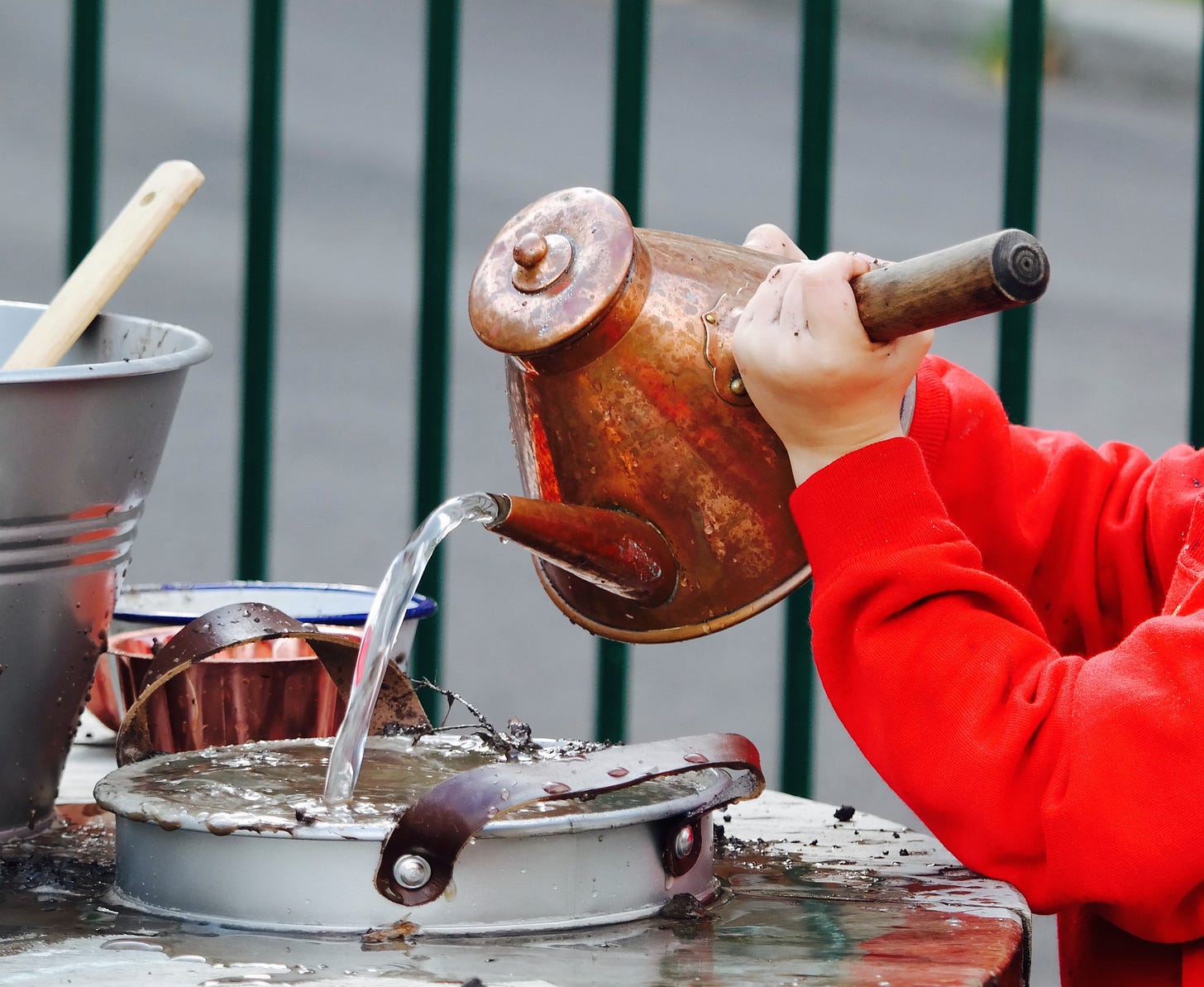Common Play Behaviours: A Guide to Enhancing Continuous Provision
As early years practitioners, we're always looking for ways to create rich, engaging environments that support children's learning and development. One concept I've found particularly useful in this endeavour is what I call 'Common Play Behaviours'. In this blog post, I'll explain what Common Play Behaviours are, why they're important, and how you can use them to enhance your continuous provision.
What are Common Play Behaviours?
Common Play Behaviours are the natural, frequently observed patterns of exploration, investigation and expression that children engage in spontaneously through self-directed, open-ended play experiences. These behaviours serve as visible indicators of the underlying cognitive, physical, social, and emotional skills children are organically developing.
By identifying these behaviours, we can ensure our provision is full of resources and opportunities to support and extend them, creating an environment that truly responds to children's developmental needs and interests.
The Importance of Common Play Behaviours
Understanding Common Play Behaviours aligns with key principles in early childhood education. It resonates with Vygotsky's sociocultural theory, which emphasises the role of social interaction in cognitive development (Vygotsky, 1978). By observing and supporting these behaviours, we're scaffolding children's learning within their zone of proximal development.
Moreover, this approach complements the ideas of theorists like Piaget, who stressed the importance of children actively constructing their own understanding through hands-on experiences (Piaget, 1952). By providing resources that support Common Play Behaviours, we're facilitating this process of active learning.
Applying Common Play Behaviours in Continuous Provision
Let's look at how we can apply this concept in three key areas of continuous provision: water play, malleable materials, and small world play.
Water Play
Common Play Behaviours in water play often include:
Exploring Properties: Children immerse themselves in sensory experiences, plunging their hands deep, pouring, and scooping.
Symbolic Representation: Simple setups of cups and tubes may provoke river imaginings or storm recreations.
Cooperation: Children work together to direct water flow or negotiate usage of limited materials.
To support these behaviours, you might:
- Provide a variety of containers for pouring and scooping
- Include materials for creating 'landscapes' (e.g., guttering, pipes)
- Ensure the space is large enough for collaborative play
Remember, the goal is to create an environment that allows for exploration and focused engagement. As I often say, "Embrace the joyful mess – and make sure you have a mop or two within reach!"
Malleable Materials
In the malleable materials area, common behaviours include:
Exploring Properties and Transformation: Children squash, roll, and stretch materials to observe how they change shape.
Recreating Representations: They mould objects from their daily lives or characters from their imagination.
Narrating Stories: Children often give voices and narratives to their creations.
To enhance this area, consider:
- Offering a range of materials with different properties (e.g., play dough, clay, kinetic sand)
- Providing open-ended resources for embellishment and storytelling
- Ensuring enough space and materials for collaborative work
As noted by early years expert Julie Fisher, "Children need time to become deeply involved in their explorations and to revisit their ideas" (Fisher, 2016). The malleable area is perfect for this kind of sustained, iterative play.
Small World Play
Small world play often involves:
Narration: Children provide a constant stream of storytelling as they manipulate objects and characters.
Creating Representations: Using symbolic objects (e.g., a block of wood becomes a bed).
Enacting Roles: Children act out social scripts and scenarios they've observed.
To support these behaviours:
- Include 'Mini Me' figures to represent the children and adults in your setting
- Provide ambiguous objects open to interpretation
- Add familiar objects that help children re-enact known spaces
This approach aligns with the work of Vivian Gussin Paley, who emphasised the importance of storytelling and imaginative play in early childhood (Paley, 1990).
Implementing Common Play Behaviours in Your Setting
To start using Common Play Behaviours in your continuous provision:
Observe: Watch how children naturally interact with different areas and materials in your setting.
Identify: List the common behaviours you see in each area.
Resource: Ensure you have materials that support and extend these behaviours at different levels of complexity.
Reflect: Regularly review and adjust your provision based on ongoing observations.
Remember, this isn't about prescribing how children should play. As I often say, "There is no Early Years law that says 'you must have a ... area'." It's about creating an environment rich in possibilities, where children can explore, create, and learn in ways that are meaningful to them.
Conclusion
Understanding and supporting Common Play Behaviours can transform your continuous provision, making it more responsive to children's natural inclinations and developmental needs. It's an approach that respects children's autonomy while providing the scaffolding they need to progress.
By focusing on these behaviours, we create spaces where children can fully engage in the serious business of play. As the eminent early years researcher Tina Bruce put it, "Play is a process, not a product" (Bruce, 2011). Our job is to provide the environment and resources that support this process, allowing children to lead their own learning journey.
So next time you're setting up your provision, take a moment to consider: What Common Play Behaviours am I supporting here? How can I enrich this space to extend these behaviours? In doing so, you'll be creating an environment that truly puts children at the heart of their own learning.
References
Bruce, T. (2011). Early Childhood Education: 4th Edition. Hodder Education.
Fisher, J. (2016). Interacting or Interfering? Improving Interactions in the Early Years. Open University Press.
Paley, V.G. (1990). The Boy Who Would Be a Helicopter. Harvard University Press.
Piaget, J. (1952). The Origins of Intelligence in Children. International Universities Press.
Vygotsky, L.S. (1978). Mind in Society: The Development of Higher Psychological Processes. Harvard University Press.





